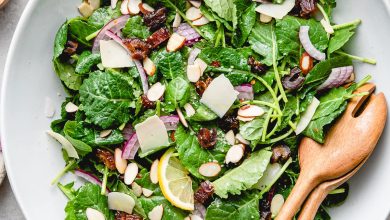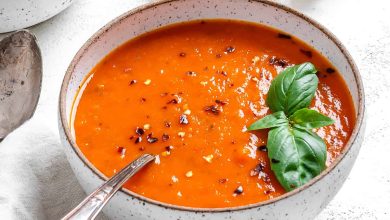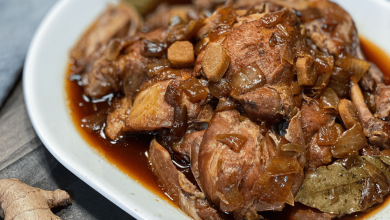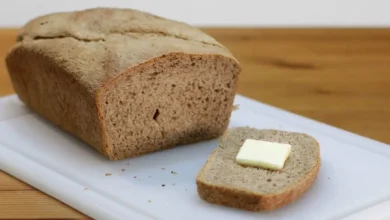An Adobe Vegetable Skillet is a flavorful and hearty dish made with a combination of vegetables and often served in a skillet. However, there isn’t a well-known historical background specifically tied to this dish, as it’s more of a modern and flexible recipe that allows for various ingredients and preparations.
Components:
The components of an Adobe Vegetable Skillet can vary depending on personal preferences, but some common ingredients include:
-
Vegetables: You can use a variety of vegetables such as bell peppers, zucchini, tomatoes, onions, corn, and beans. The choice of vegetables can be adjusted based on what’s in season or your personal taste.
-
Seasonings: Key seasonings typically include garlic, cumin, chili powder, paprika, and salt and pepper to taste. These spices give the dish its distinctive southwestern flavor.
-
Protein (optional): You can add protein sources like tofu, tempeh, or meat like chicken or sausage if desired.
-
Olive oil or cooking oil of your choice.
Steps to Prepare Adobe Vegetable Skillet:
-
Prepare the Vegetables: Wash and chop your choice of vegetables into bite-sized pieces.
-
Heat the Skillet: Place a skillet or large pan over medium-high heat and add a bit of olive oil. Let it heat up.
-
Sauté Vegetables: Add the chopped vegetables to the skillet and sauté them until they become tender and slightly browned. This usually takes around 5-7 minutes.
-
Season: Add minced garlic, cumin, chili powder, paprika, salt, and pepper to the vegetables. Adjust the seasonings to your taste preferences. Stir well to evenly distribute the spices.
-
Protein Addition (if desired): If you’re adding protein like tofu, tempeh, or meat, cook it separately in another pan or skillet until it’s fully cooked, and then add it to the vegetable mixture.
-
Serve: Once everything is cooked and seasoned to your liking, remove the skillet from the heat. You can garnish the dish with fresh cilantro, grated cheese, or a squeeze of lime juice if desired.
-
Enjoy: Serve the Adobe Vegetable Skillet hot and enjoy your flavorful and nutritious meal!
Time Needed:
The preparation time for an Adobe Vegetable Skillet can vary depending on the quantity of vegetables and whether you’re adding protein. On average, it should take about 20-30 minutes from start to finish.
Remember that the flexibility of this dish allows you to customize it to your liking, so feel free to experiment with different vegetables and seasonings to create your own unique version of Adobe Vegetable Skillet.
Certainly! Here are some nutrition facts and health information related to an Adobe Vegetable Skillet:
Nutrition Facts (Approximate, per serving):
- Calories: Varies depending on ingredients and serving size
- Total Fat: Varies, mainly from cooking oil and any added cheese or protein sources
- Carbohydrates: Varies, mainly from vegetables and any grains or legumes you might include
- Fiber: High, due to the vegetables and potential inclusion of beans or whole grains
- Protein: Varies, depending on the presence of protein sources like tofu, tempeh, or meat
- Vitamins and Minerals: Rich in vitamins and minerals, particularly vitamin C, vitamin A, potassium, and folate from the vegetables
- Sodium: Depending on added salt, but can be controlled by seasoning to taste
Health Information:
-
Vegetable-Rich: An Adobe Vegetable Skillet is a great way to incorporate a variety of vegetables into your diet, which is essential for a well-rounded and nutritious meal. Vegetables provide essential vitamins, minerals, and dietary fiber.
-
Low in Saturated Fat: This dish is typically low in saturated fat if you use minimal cooking oil and choose lean protein sources or omit them altogether.
-
High in Fiber: Due to the abundance of vegetables and potential inclusion of legumes or whole grains, Adobe Vegetable Skillet is high in dietary fiber. Fiber aids in digestion and can help maintain healthy cholesterol levels.
-
Customizable: You have control over the ingredients you add to the skillet, making it easy to cater to dietary preferences and restrictions. You can make it vegetarian, vegan, gluten-free, or adjust the level of spiciness to your liking.
-
Rich in Antioxidants: The variety of colorful vegetables in this dish provides a wide range of antioxidants, which can help protect your cells from damage caused by free radicals.
-
Protein Options: If you choose to include protein sources like tofu or tempeh, it adds plant-based protein to your meal, making it suitable for vegetarians and vegans. If you prefer meat, lean options like chicken breast can be used.
-
Low Sodium Option: By controlling the amount of added salt or using low-sodium seasoning options, you can make this dish lower in sodium, which is important for those watching their salt intake.
It’s worth noting that the exact nutritional content of your Adobe Vegetable Skillet will depend on the specific ingredients and portion sizes you use. To get more precise nutrition information, you can use a recipe calculator or consult nutrition labels on packaged ingredients.








